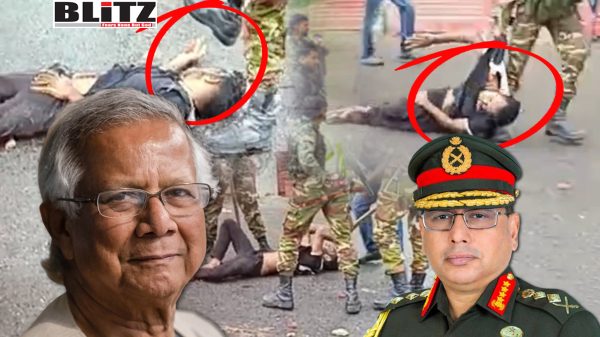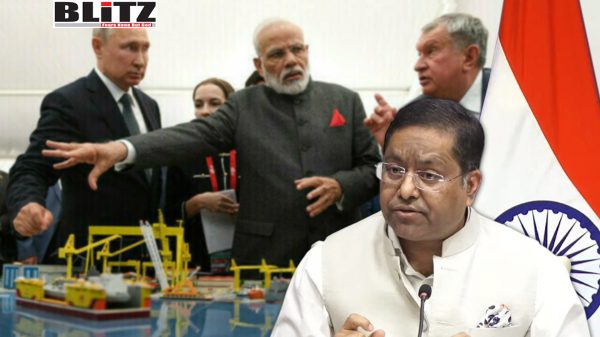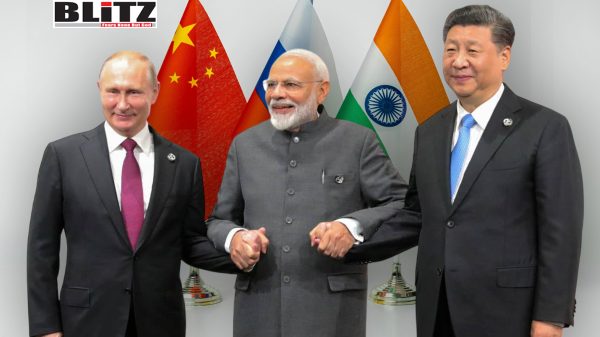A nation hijacked: Islamist blueprint to make Bangladesh‘Hindu-free’
- Update Time : Sunday, July 20, 2025

July 16, 2025, must forever be marked as a Black Day in Bangladesh’s history. On that day, the Bangladesh Army – an institution that once held global respect for its role in UN peacekeeping missions – committed crimes against humanity in the Gopalganj district. Under the pretext of “maintaining law and order,” the military gunned down unarmed civilians and unleashed unspeakable brutality in the heart of Sheikh Hasina’s hometown.
According to multiple reports, including alarming disclosures submitted to the United Nations by the International Crimes Research Foundation (ICRF), the atrocities carried out in Gopalganj may amount to genocide. The ICRF, in a formal letter to the UN Ethics Office, highlighted not just the Gopalganj bloodbath but a disturbing pattern of political violence, heritage destruction, and gross human rights violations engulfing Bangladesh.
In a desperate attempt at damage control, the Bangladesh Army issued a statement alleging it was forced to use lethal weapons “in self-defense”.
However, this narrative is being artificially amplified through state-controlled media and propaganda loyalists of the Yunus regime, many of whom are embedded in foreign media circles due to past affiliations with outlets like AFP.
On the ground, however, the truth is far darker. Social media is flooded with testimonies and footage showing no resistance from the civilians. Instead, reports suggest nighttime raids are continuing, with families – men, women, and even children – being abducted under the cover of darkness.
The most chilling detail? None of the victims received an autopsy. The four confirmed dead – Dipto Saha (30), Ramzan Kazi (17), Sohel Rana (35), and Imon Talukder – were either cremated or buried hastily, within hours, without inquest or forensic examination. This was not just a cover-up; it was a state-sponsored execution meant to erase evidence.
This atrocity was not an isolated event. It is part of a larger, calculated strategy orchestrated by radical Islamists and jihadists who seized power through what many now call the Jihadist Coup of 2024, orchestrated with the direct patronage of Nobel laureate-turned-Islamist-political-aspirant Muhammad Yunus.
Under this new regime, attacks against Bangladesh’s Hindu community have sharply intensified. Temples are being torched, houses razed, and even the names of districts with Hindu heritage are being targeted for erasure. The Gopalganj district – home to a large Hindu population – has long been in the crosshairs of Islamists. In 2014, Khaleda Zia, chairperson of the Bangladesh Nationalist Party (BNP), called for changing its name and made offensive remarks against its residents, labeling them “Gopali” – a derogatory slur.
Today, that same hatred has morphed into violence. Islamist mobs now brazenly wave the flags of Al Qaeda, ISIS, Hamas, and the Taliban, chanting militant slogans in broad daylight. One extremist leader, Mufti Faizul Karim of Islami Shashontontro Andolan, openly vowed to turn Bangladesh into the “next Afghanistan”.
Bangladesh is becoming a new staging ground for international jihadists. According to an article published in the Gatestone Institute website, since the coup, senior leaders from Hamas, Al-Qaeda, and the Taliban have visited Bangladesh. Among them: Sheikh Khaled Quddumi and Khaled Mishal of Hamas, and Pakistani Islamists like Mufti Taqi Usmani and Maulana Fazlur Rahman.
Intelligence sources suggest these visits aimed to forge operational links with Rohingya refugees and “Stranded Pakistanis” (Biharis) – marginalized groups now being radicalized and recruited for terrorist activities targeting Israel, India, the US, and even Gulf nations like Saudi Arabia and Bahrain.
The Islamists’ mission goes beyond physical violence – they seek to obliterate Bangladesh’s secular and pluralistic identity. Calls have intensified to remove Bangladesh’s national anthem written by Rabindranath Tagore, branding it a “Hindu song”. There is also growing pressure to rename Gopalganj, as Islamists argue its Hindu-rooted name “offends Muslim sentiment”.
Such demands are not based on faith – they are born of fascist ideology. The historical truth is that Gopalganj was developed by Hindu zamindars and carries the legacy of Rani Rasmoni, a revered Bengali icon. The area has long stood as a symbol of communal harmony and inclusive identity.
But the current regime wants to destroy that. In a blatant act of cultural cleansing, the ancestral home of Satyajit Ray – a global icon of Bengali art and cinema – was demolished in Mymensingh district. Authorities dismissed the home’s connection to Ray’s family despite decades of history and public sentiment. This was not an accident; it was a calculated erasure of Bengali and Hindu legacy.
Other revered landmarks, including those linked to Sheikh Mujibur Rahman and Rabindranath Tagore, have also been targeted. And while the physical destruction is horrifying, the psychological warfare being waged is even more insidious.
The Gopalganj massacre is not merely a tragedy – it is a harbinger. The bloodshed claimed at least five lives, denied even the dignity of proper autopsies, and was followed by a military lockdown and media blackouts.
Historically, Gopalganj stood as a bastion of communal peace – even Jamaat-e-Islami and BNP held peaceful rallies there. But under the guise of a National Citizen Party (NCP) rally, violence was engineered. The army did not maintain peace – they incited bloodshed. The curfew that followed wasn’t about safety – it was about sealing off truth, isolating the district, and silencing its people.
By turning a rally into a battlefield, the Yunus regime has made it clear: no place is safe for Bangladesh’s minorities.
The ongoing attacks on cinema halls, Sufi shrines, Hindu temples, and cultural institutions signal a regime hell-bent on rewriting the country’s very DNA. This is not mere negligence – it is a systemic and orchestrated assault on Bangladesh’s soul.
Where once stood a secular nation, inspired by the dreams of its founder Sheikh Mujibur Rahman, now stands a fractured state gripped by fanaticism, manipulated by extremists, and betrayed by its own institutions.
The July 16 massacre in Gopalganj is a war crime. It is a gruesome symbol of a broader genocidal campaign unfolding in Bangladesh under the guise of “restoring order”. The international community must not remain silent. As the UN and Western powers turn a blind eye – complicit in the very coup that empowered these jihadist elements – the people of Bangladesh face annihilation of their culture, heritage, and very existence. If Gopalganj is allowed to be forgotten, tomorrow it will be Faridpur, Narayanganj, Brahmanbaria and beyond. The world must speak up. Not later – now. For every minute of silence, another life is lost, another truth is buried, and another piece of Bangladesh dies.










